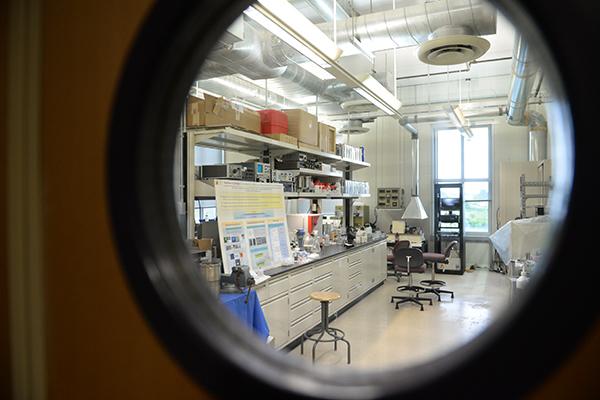The director of the University’s computational biology institute submitted his first grant application as a GW researcher inside a McDonald’s in a small Virginia town two years ago.
Since then, Keith Crandall has transformed the institute’s space on the Virginia Science and Technology Campus to fit four more researchers, and has built up the institute to become a new source of revenue as GW’s graduate enrollment has slumped across schools.
Those hires – and one more he’s looking to add this year – will help Crandall start drafting a curriculum for a graduate program, which he hopes will launch as soon as next fall.
“We’ve been talking about it, collaborating with departments around campus to see how it can be integrated into existing programs in computer science, biology and medicine, to make sure we’re getting all interested parties involved in developing a curriculum,” he said.
Crandall hasn’t yet submitted an official proposal for an academic program, but he said he has been working with several departments and the Children’s National Medical Center, which awarded a grant to the institute, to discuss what one might look like. The program would be interdisciplinary and let students specialize in areas like bioinformatics, structural biology or medical informatics.
Crandall came to GW from Brigham Young University in 2012 to lead the institute that GW’s research team had called a top priority. He brought in a team of researchers with diverse backgrounds, specializing in evolutionary biology, mathematics and computer science.
Provost Steven Lerman has said the degree would likely start for graduate students, and that he’ll spend this year talking with professors about their options before looking to launch a program.
“We’re still trying to figure out what program would make sense, if any, and how it should function to make sure that it’s rooted in the actual schools in which each of the faculty in the schools have appointments,” he said.
Bringing in faculty and researchers for interdisciplinary fields poses a challenge for the University: It can be unclear which academic department should house their position.
One question the program’s leaders will have to answer this year is whether a graduate program would be for master’s or doctoral students. Crandall said the University could also explore a program for undergraduates in the future.
Crandall said he was leaning toward a program based in the School of Medicine and Health Sciences, though that could force the school to accept more students. GW’s medical program is the sixth-most selective in the country, according to U.S. News and World Report.
“They already have a fantastic infrastructure setup for recruiting grad students, hosting them when they come for a visit, and mentoring them during the process,” Crandall said.
Duke University’s computational biology Ph.D. program is housed in a research center itself, while Yale University’s is part of its biological and biomedical sciences program.
Taylor Maxwell – a researcher who came to GW fully funded from the National Institutes of Health, the University of Texas and Brigham Young University – said he first met Crandall working in a lab as an undergraduate, and that he became his friend and mentor.
Recruiting graduate students would mean continuing to bring in researchers with different backgrounds, which would help bring new expertise to research projects.
Max Alekseyev, a researcher with a strong background in programming and math, said graduate students are an invaluable resource for ideas and assistance for researchers.
“Students can also get valuable experience, publications and basically work in the industry of bio informatics before starting their career,” Alekseyev said.
Three doctoral students are already doing research about biodiversity informatics and translational medicine, and one is fully funded by the Smithsonian Institute, Crandall said.
“I think [collaborations] lead to opportunities for funding and for our students,” Crandall said. “It’ll get them into internships so they can see what those industries look like, what those environments look like, so once they graduate, they can go back to that place that loved them and wants to hire them.”
Mary Ellen McIntire contributed reporting







